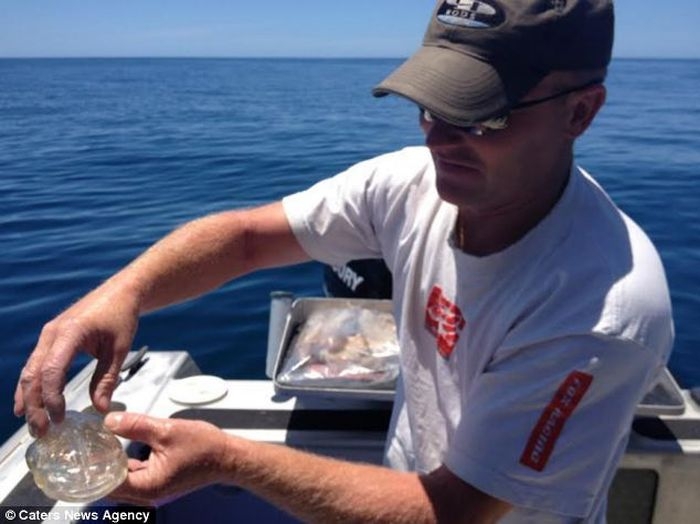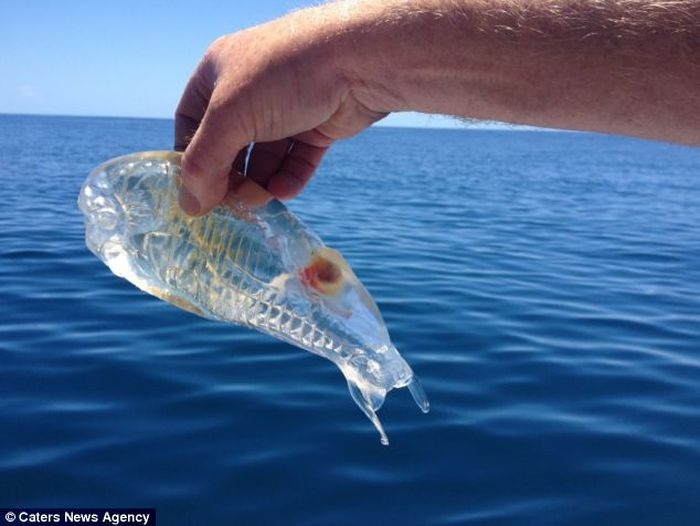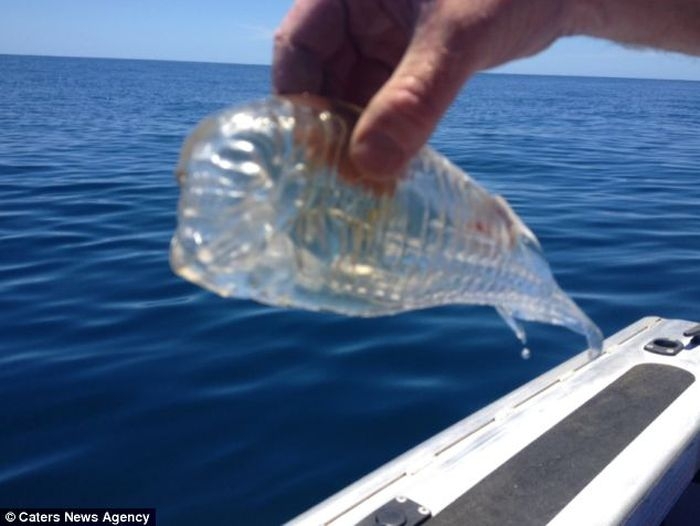14
3
A fisherman from New Zealand caught a strange creature 43 miles north off the North Island's Karikari Peninsula.
Mr Fraser said: 'I was in two minds whether to haul it in, but curiosity got the better of me and I decided to take a closer look.
It felt scaly and was quite firm, almost jelly like, and you couldn't see anything inside aside from this orange little blob inside it.
The photo baffled Mr Fraser and all of his fisherman friends, who are still none more the wise as to what the creature could have been.
It felt scaly and was quite firm, almost jelly like, and you couldn't see anything inside aside from this orange little blob inside it.
The photo baffled Mr Fraser and all of his fisherman friends, who are still none more the wise as to what the creature could have been.
Mr Fraser said: 'We have no idea what it could have been but it was quite something and I'd never seen anything like it before.'
However, Deborah Cracknell, research lead from the National Marine Aquarium in Plymouth, told MailOnline she believes the creature is a Salpa maggiore (Salpa maxima).
Paul Cox, director of conservation and communication at the National Marine Aquarium, said: 'Little is known about these salps, however, they are often found in colder seas, with the most abundant concentration found in the Southern Ocean.
However, Deborah Cracknell, research lead from the National Marine Aquarium in Plymouth, told MailOnline she believes the creature is a Salpa maggiore (Salpa maxima).
Paul Cox, director of conservation and communication at the National Marine Aquarium, said: 'Little is known about these salps, however, they are often found in colder seas, with the most abundant concentration found in the Southern Ocean.
'The salp is barrel-shaped and moves by contracting, pumping water through its gelatinous body.
'It strains the water through its internal feeding filters, feeding on phytoplankton from the upper sunlit layer of the ocean.
'They have an interesting life-cycle with alternate generations existing as solitary individuals or groups forming long chains.
'In common with other defenceless animals that occupy open water - jellies and hydroids for example - the translucence presumably provides some protection from predation. Being see-through is a pretty good camouflage in water.'
'It strains the water through its internal feeding filters, feeding on phytoplankton from the upper sunlit layer of the ocean.
'They have an interesting life-cycle with alternate generations existing as solitary individuals or groups forming long chains.
'In common with other defenceless animals that occupy open water - jellies and hydroids for example - the translucence presumably provides some protection from predation. Being see-through is a pretty good camouflage in water.'
Source:
Ссылки по теме:
- Strange laws from different countries
- Amazing project "Emptied gestures"
- Interesting facts that are actually not true
- A marble sculpture of the dead wife and her dog
- Friendship between tiger and a man
Tags: animals interesting
реклама












